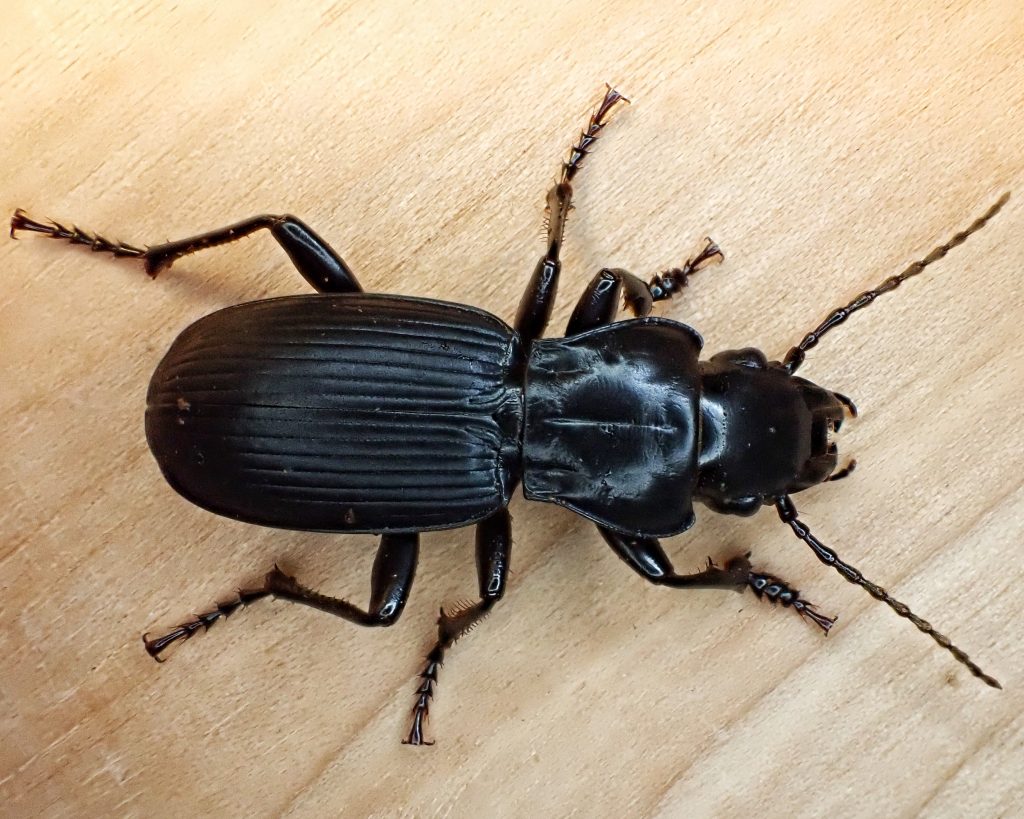
This big carabid beetle taxa is probably the only Pterostichus I’ll ever be able to identify in the field, because it is significantly bigger than anything else in that genus in our region. The identification of the rest of the members of Pterostichus relies mostly on genitalic dissection, although there are a few with distinctively shaped pronotums, although even that requires some magnification, at least for neophytes such as myself. And, to be honest, I didn’t make the initial identification of this one either. My brain was still on ‘whoa, big carabid beetle!’, when Craig Sondergaard called out ‘Pterostichus lama!’ (And yes, Craig does speak in italics. There is a different timbre in his voice when he says, for example, ‘Ocypus olens’, than there is when he says Devil’s Coach Horse. Despite my inability to always make out what he says, I can always tell whether it was Latin or not)

Because of their size, and my fondness for big beetles, I had been hoping to finally capture or photograph one of these for this project. But they are a fast moving target and previous attempts to photograph one had only resulted in vaguely beetle-like blurs. Even capturing one has proved difficult, since they can disappear into the leaf litter in an instant. This time I didn’t even try to take a photo, and I’ve finally (more or less) learned to have a container in hand when I flip a log, so that, by dint of also scooping up a bunch of dirt, I was finally able to secure a specimen. It was very cooperative after a few hours in the fridge, and it earned its release into my wife’s flower pots, where hopefully it will decimate the cutworm population.
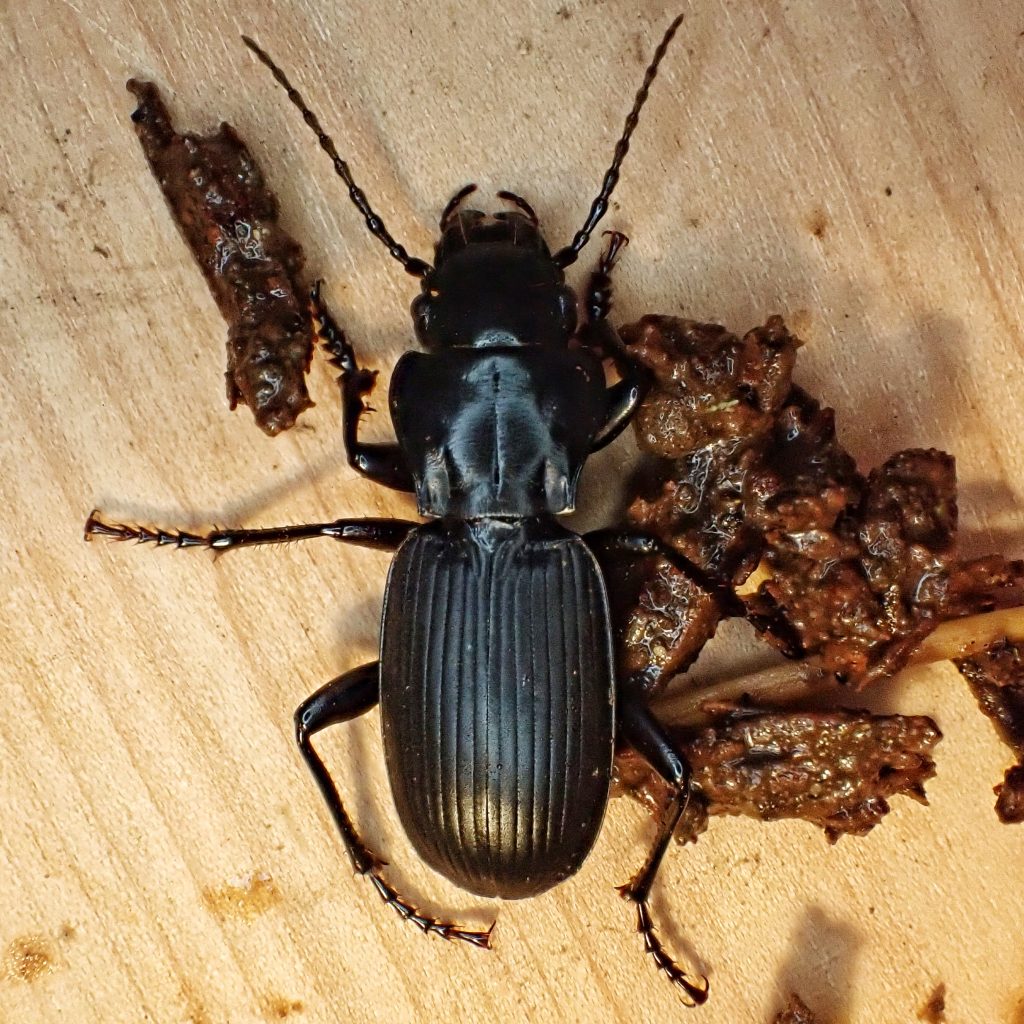
I was rather disappointed by my inability to find more information on these very cool beetles. It doesn’t feel like I did them justice, but it really wasn’t an access problem. I just couldn’t find life history information for this species. If any of you good readers know where I can find out more about Pterostichus lama, please tell me and I will update this profile.
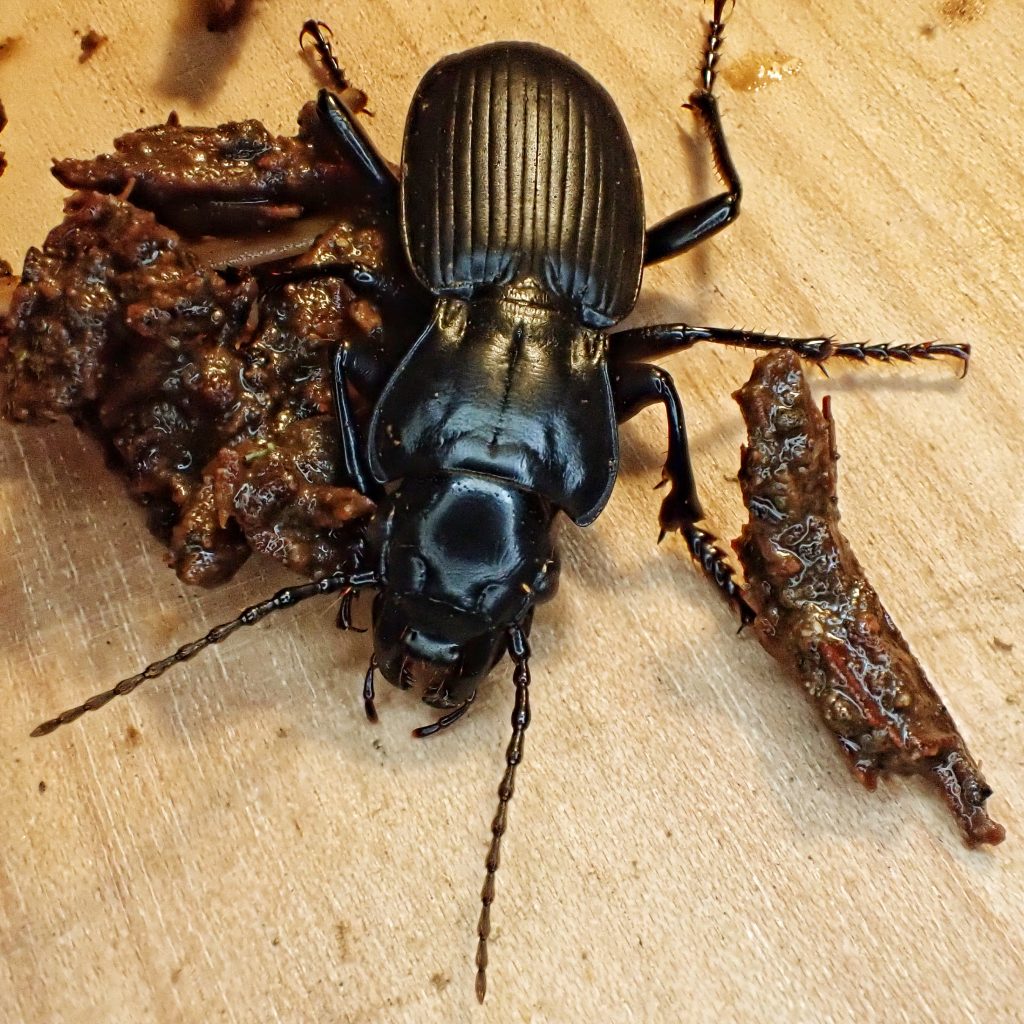
Description-Large (20-30mm) black beetle with a shiny head and pronotum, and somewhat duller elytra; the head is broad and the pronotum is trapezoidal, widest in front, lateral margins curved; elytra grooved, fused, wings brachypterous (rudimentary and small).
Similar species-All other Pterostichus in our region are much smaller (16mm max).
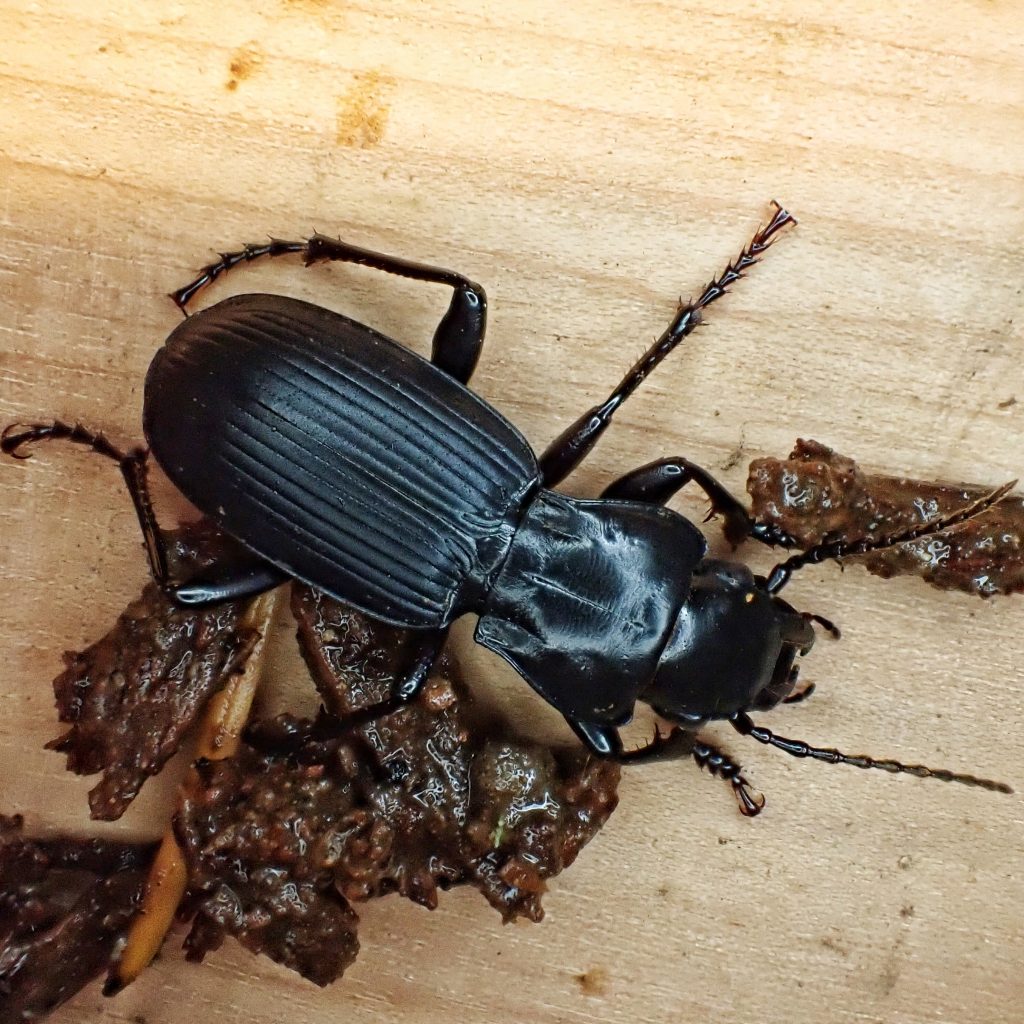
Habitat-Under bark, logs, and leaf litter on the floor of coniferous and mixed forests and woodlands.
Range-West Coast of North America; most common west of Cascades and in nw California/sw Oregon in our region
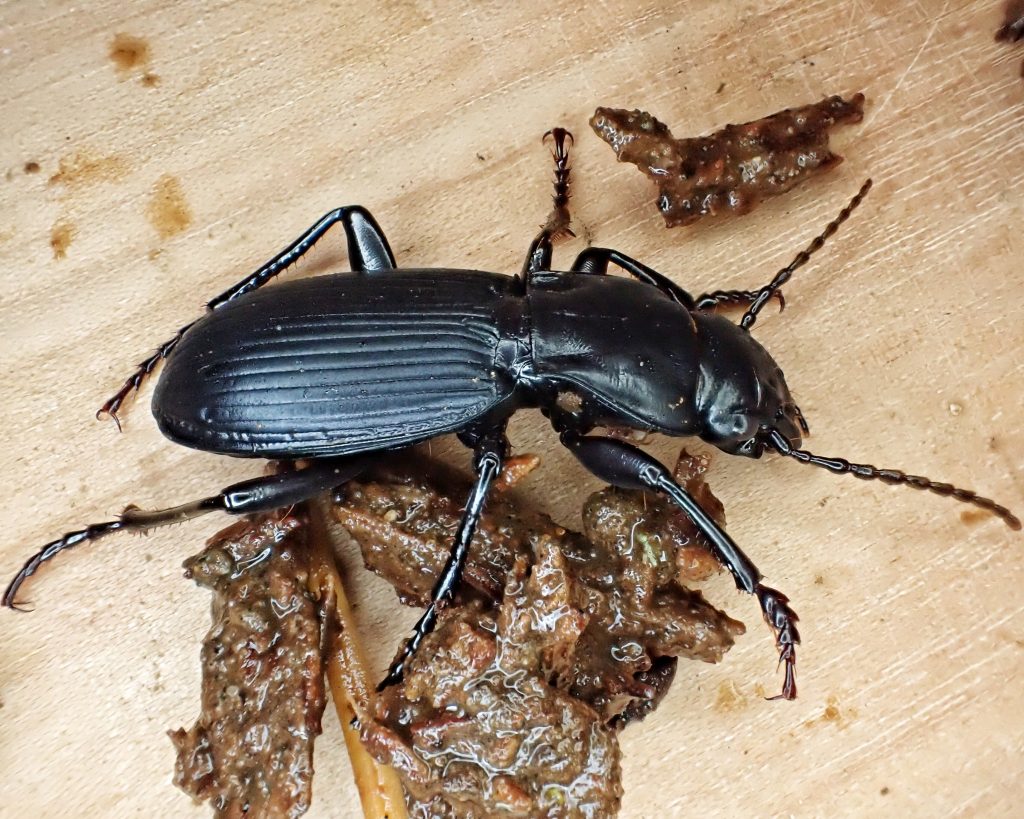
Eats-Termites, larva of beetles and other orders, and probably any other invertebrates it can subdue.
Eaten by-Adults may be parasitized by nematode worms; known to be food for Spotted and Barred Owls; probably preyed upon by many different insectivorous birds and mammals.
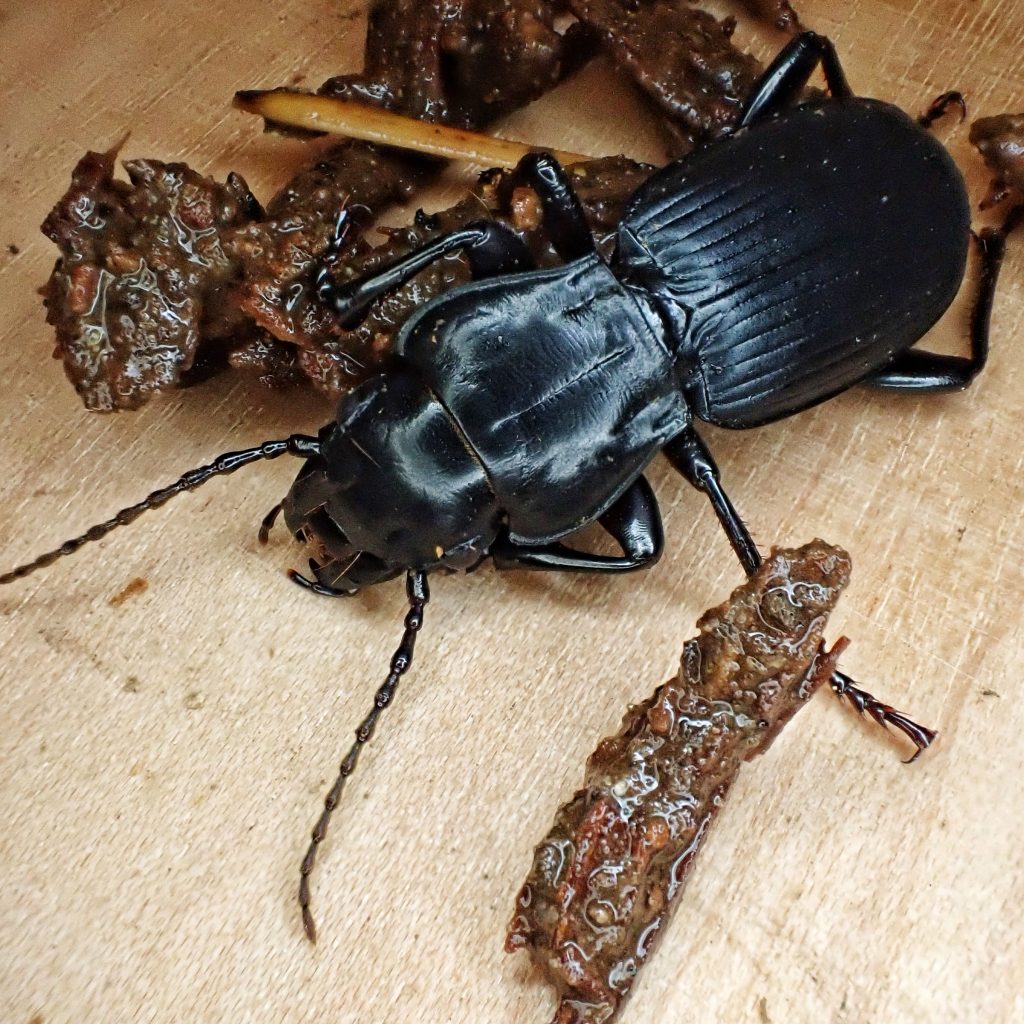
Adults active-Nocturnal; year around.
Life cycle-It seems possible that eggs are laid in soil under woody debris, larvae take 6-8 months to develop, possibly in diapause during the winter, and that adults live about a year, but I can find nothing definitive for this species.
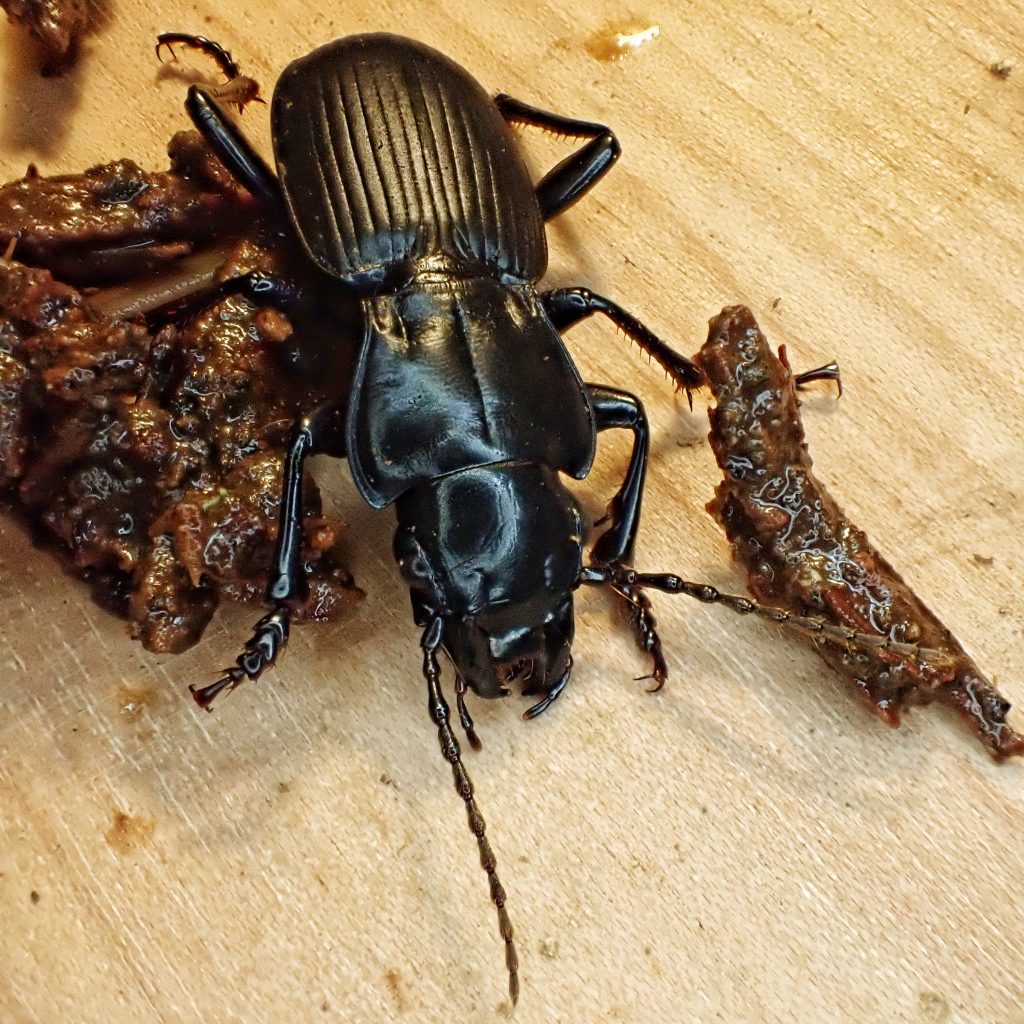
Etymology of names–Pterostichus may be from the Greek words for ‘wing’ and ‘wall’, and may reference the fused elytra of many members of this genus. The specific epithet lama seems to be from the Latin for ‘slough/bog/fen’, but this is a species of conifer forests, so I can’t say what the reference is.
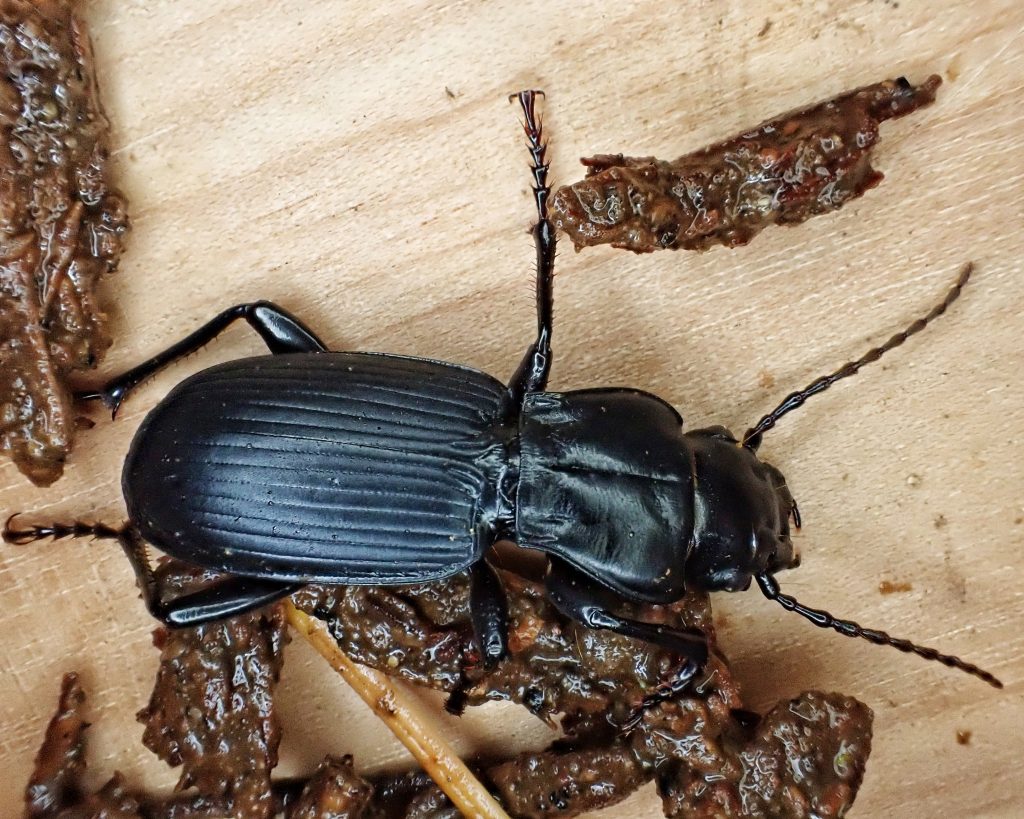
https://bugguide.net/node/view/70759
https://www.centralcoastbiodiversity.org/pterostichus-lama.html
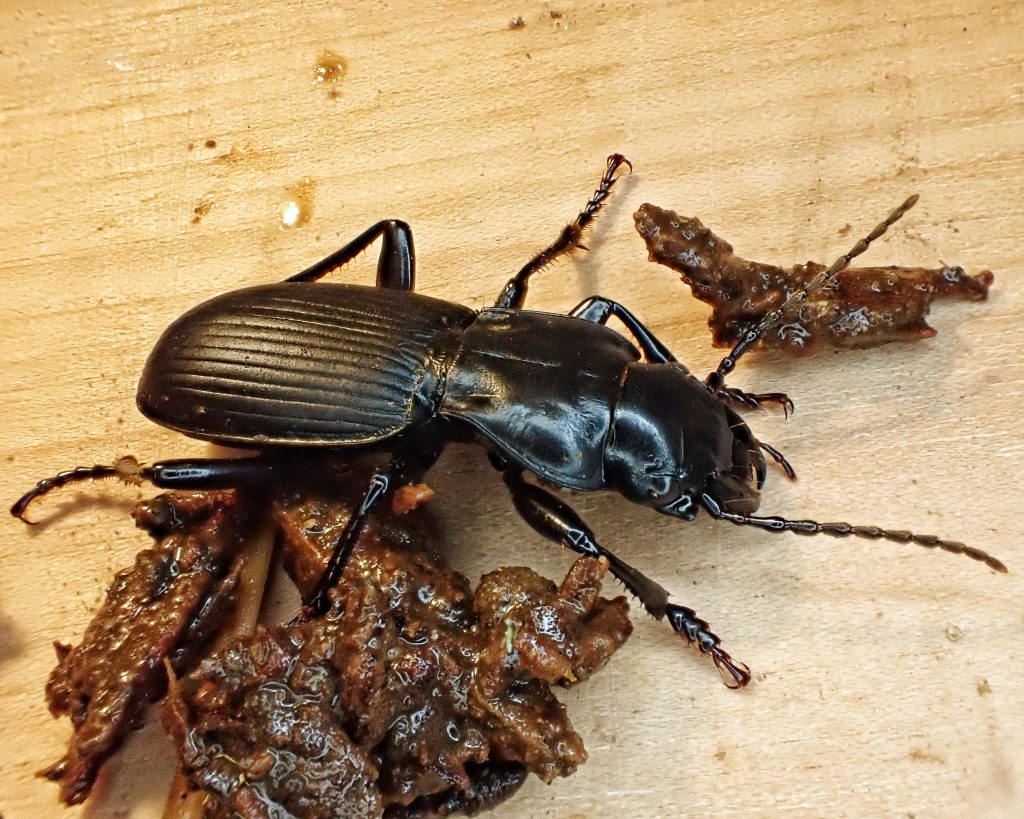
🤣
You have probably already seen this, but sharing just in case you haven’t. Although this paper covers a different species of Pterostichus, it still may be useful.
https://academic.oup.com/ee/article/50/6/1257/6366036
Thanks! I don’t think I’ve seen that paper, and it will certainly be useful when/if I find P. melanarius